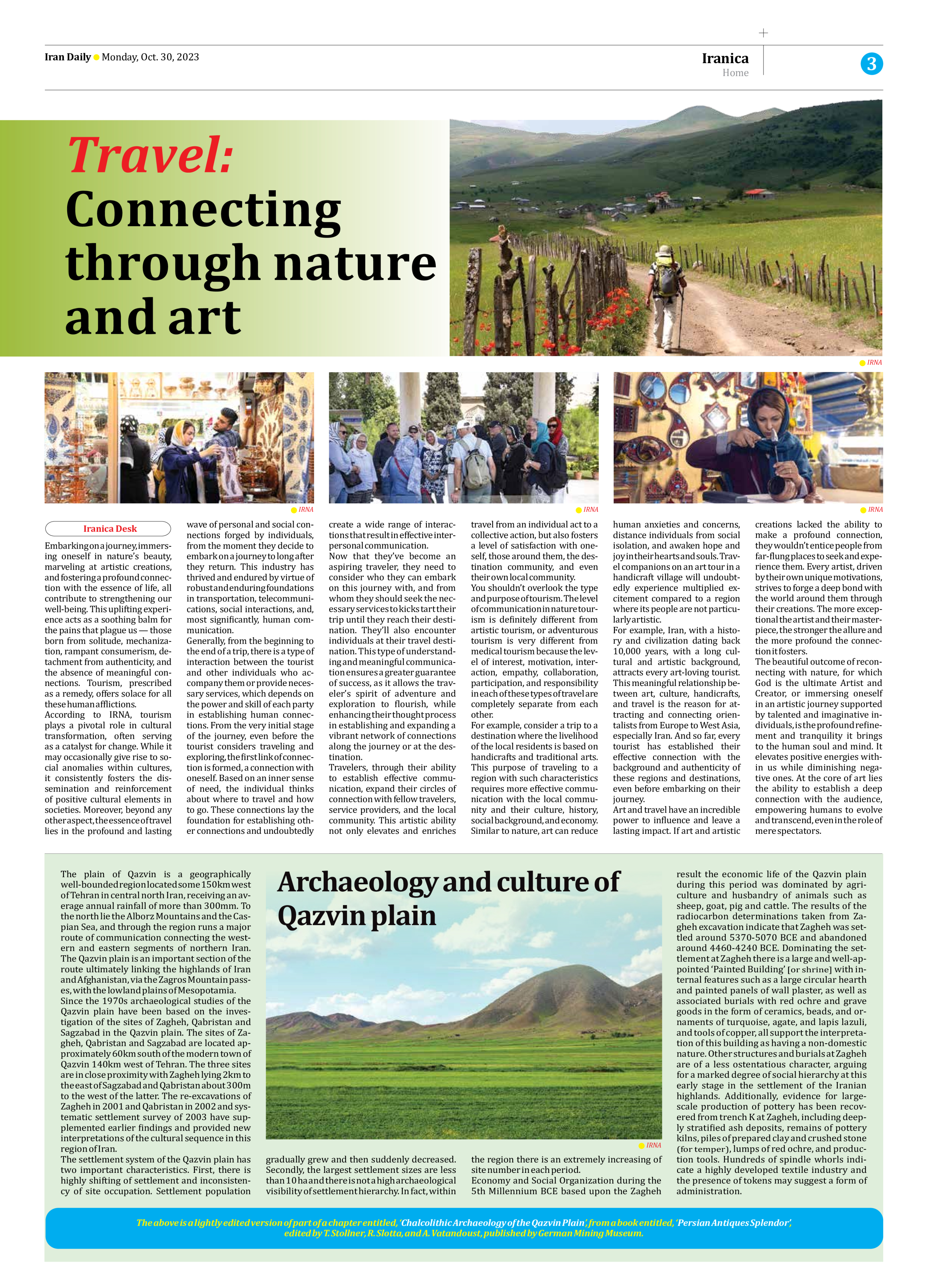
Archaeology and culture of Qazvin plain
The plain of Qazvin is a geographically well-bounded region located some 150km west of Tehran in central north Iran, receiving an average annual rainfall of more than 300mm. To the north lie the Alborz Mountains and the Caspian Sea, and through the region runs a major route of communication connecting the western and eastern segments of northern Iran. The Qazvin plain is an important section of the route ultimately linking the highlands of Iran and Afghanistan, via the Zagros Mountain passes, with the lowland plains of Mesopotamia.
Since the 1970s archaeological studies of the Qazvin plain have been based on the investigation of the sites of Zagheh, Qabristan and Sagzabad in the Qazvin plain. The sites of Zagheh, Qabristan and Sagzabad are located approximately 60km south of the modern town of Qazvin 140km west of Tehran. The three sites are in close proximity with Zagheh lying 2km to the east of Sagzabad and Qabristan about 300m to the west of the latter. The re-excavations of Zagheh in 2001 and Qabristan in 2002 and systematic settlement survey of 2003 have supplemented earlier findings and provided new interpretations of the cultural sequence in this region of Iran.
The settlement system of the Qazvin plain has two important characteristics. First, there is highly shifting of settlement and inconsistency of site occupation. Settlement population gradually grew and then suddenly decreased. Secondly, the largest settlement sizes are less than 10 ha and there is not a high archaeological visibility of settlement hierarchy. In fact, within the region there is an extremely increasing of site number in each period.
Economy and Social Organization during the 5th Millennium BCE based upon the Zagheh result the economic life of the Qazvin plain during this period was dominated by agriculture and husbandry of animals such as sheep, goat, pig and cattle. The results of the radiocarbon determinations taken from Zagheh excavation indicate that Zagheh was settled around 5370-5070 BCE and abandoned around 4460-4240 BCE. Dominating the settlement at Zagheh there is a large and well-appointed ‘Painted Building’ [or shrine] with internal features such as a large circular hearth and painted panels of wall plaster, as well as associated burials with red ochre and grave goods in the form of ceramics, beads, and ornaments of turquoise, agate, and lapis lazuli, and tools of copper, all support the interpretation of this building as having a non-domestic nature. Other structures and burials at Zagheh are of a less ostentatious character, arguing for a marked degree of social hierarchy at this early stage in the settlement of the Iranian highlands. Additionally, evidence for large-scale production of pottery has been recovered from trench K at Zagheh, including deeply stratified ash deposits, remains of pottery kilns, piles of prepared clay and crushed stone (for temper), lumps of red ochre, and production tools. Hundreds of spindle whorls indicate a highly developed textile industry and the presence of tokens may suggest a form of administration.
The above is a lightly edited version of part of a chapter entitled, ‘Chalcolithic Archaeology of the Qazvin Plain’, from a book entitled, ‘Persian Antiques Splendor’,
edited by T. Stollner, R. Slotta, and A. Vatandoust, published by German Mining Museum.







